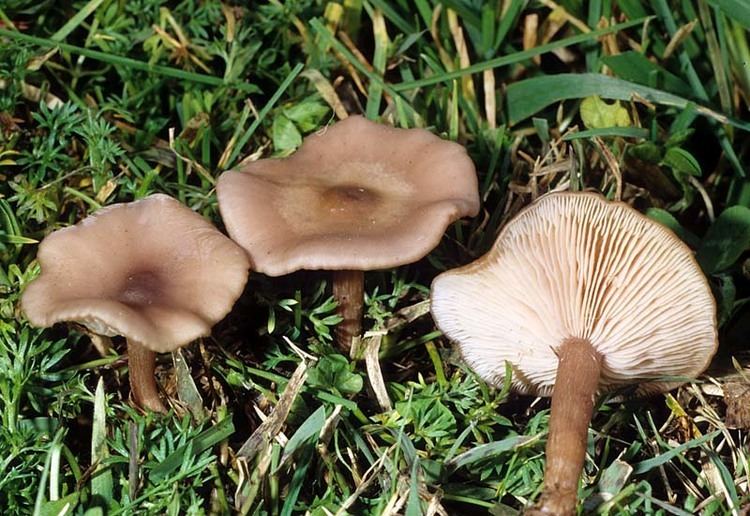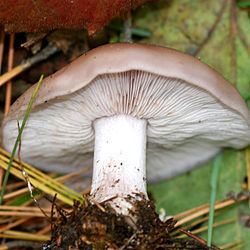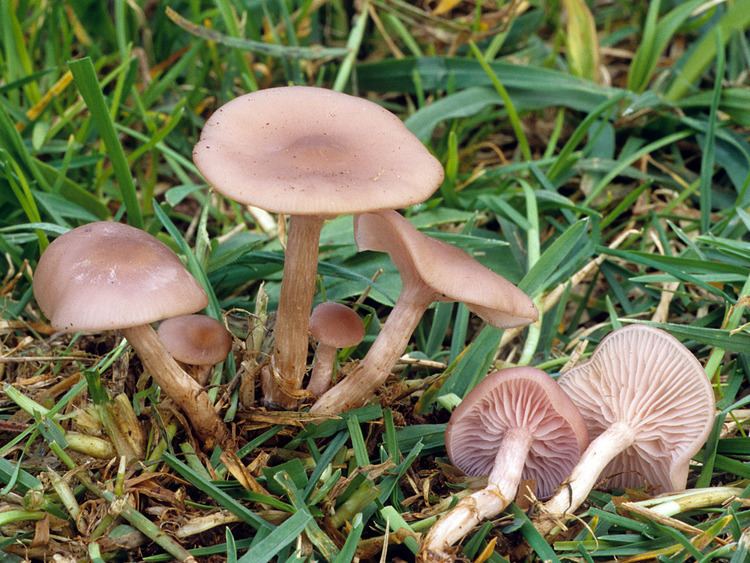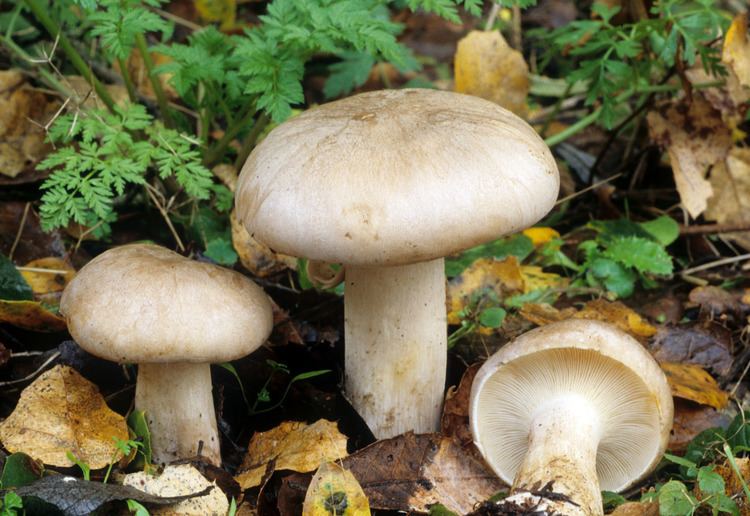Order Agaricales Scientific name Clitocybe | Division Basidiomycota Higher classification Tricholomataceae | |
 | ||
Lower classifications Clitocybe nebularis, Clitocybe nuda, Clitocybe odora, Clitocybe dealbata, Ampulloclitocybe clavipes | ||
Clitocybe is a genus of mushrooms characterized by white, off-white, buff, cream, pink, or light-yellow spores, gills running down the stem, and pale white to brown or lilac coloration. They are primarily saprotrophic, decomposing forest ground litter. There are estimated to be around 300 species in the widespread genus.
Contents
- The trooping funnel infundibulicybe clitocybe geotropa
- Taxonomy
- Toxicity
- Selected species
- Pharmacology
- References

Clitocybe means sloping head.
A few members of the genus are considered edible; many others are poisonous, containing the toxin muscarine among others. Distinguishing individual species of Clitocybe is generally prohibitively difficult to non-experts, requiring the analysis of microscopic characters. Therefore, with the exception of a few charismatic and readily identified members, Clitocybe mushrooms are rarely collected for consumption.

The trooping funnel infundibulicybe clitocybe geotropa
Taxonomy

Clitocybe was originally proposed by Elias Fries in 1821 as a tribe in the genus Agaricus. Friedrich Staude elevated it to generic status in 1857.
Recent molecular work has shown the genus to be polyphyletic, with many members seemingly distantly related and other fungi, such as the field blewit and wood blewit, now known as Clitocybe saeva and C. nuda respectively, are more closely related. As C. nebularis is the Type species, those most distantly related to it would be likely to be reclassified in the future.
In a 2003 paper, Finnish mycologist Harri Harmaja proposed C. geotropa and twelve other Clitocybe species be split off into a new genus Infundibulicybe on the basis of spore properties. He also reclassified C. clavipes in the genus Ampulloclitocybe, that genus name taking precedence over his own proposal Clavicybe. Other former Clitocybe species have been placed in the genera Atractosporocybe, Leucocybe and Rhizocybe.
Toxicity
The consumption of two species, Clitocybe acromelalga from Japan, and Clitocybe amoenolens from France, has led to several cases of mushroom-induced erythromelalgia which lasted from 8 days to 5 months.
Many small Clitocybe species contain the toxin muscarine, which was originally found in small amounts in the famous fly agaric. However, the small white Clitocybe species contain muscarine in dangerous amounts, and two species in particular, the closely related Clitocybe dealbata and Clitocybe rivolusa, contain muscarine in deadly amounts, and deaths have been recorded for eating those two Clitocybe species.
Selected species
The bioluminescent jack o'lantern mushroom (Omphalotus olearius) was formerly placed in this genus as Clitocybe illudens.
Pharmacology
An extract of Clitocybe gibba exhibits inhibitory activity on thrombin.
